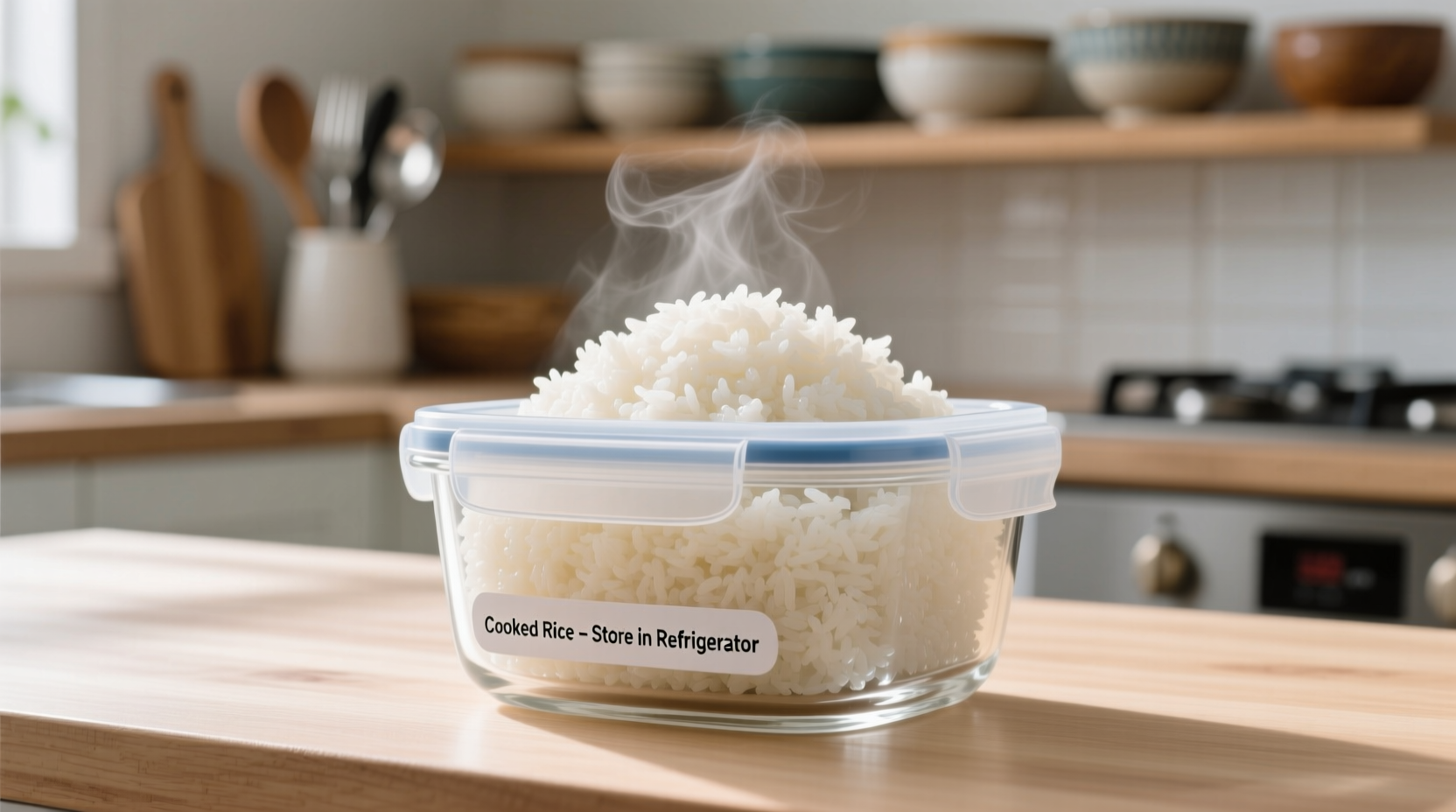That container of leftover rice in your fridge? It's not just about avoiding waste—it's a food safety issue. Improperly stored rice can harbor Bacillus cereus, bacteria responsible for 63,000+ annual food poisoning cases in the US alone. As a culinary professional who's managed kitchen safety in Michelin-starred restaurants, I'll show you exactly how to store rice safely while maximizing freshness.
Why Rice Requires Special Storage Attention
Unlike many leftovers, cooked rice presents unique food safety challenges. The FDA Food Code specifically addresses rice due to Bacillus cereus spores that survive cooking. These dormant spores reactivate when rice cools slowly between 40°F–140°F (4°C–60°C), producing toxins that cause vomiting or diarrhea.
Key risk factor: Rice left at room temperature for more than 1 hour enters the "danger zone" where bacteria multiply rapidly. Professional kitchens follow the "2-hour rule" (1 hour if ambient temperature exceeds 90°F/32°C), but home cooks often unknowingly extend this timeframe.

Science-Backed Refrigeration Timeline
Based on USDA Food Safety Guidelines and CDC research, here's the precise storage window:
| Storage Method | Maximum Safe Duration | Temperature Requirement |
|---|---|---|
| Refrigerator (standard) | 3-4 days | 40°F (4°C) or below |
| Refrigerator (professional) | 5 days | 37°F (3°C) or below |
| Freezer | 1-2 months | 0°F (-18°C) or below |
This timeline assumes proper cooling and storage techniques. The 3-4 day recommendation isn't arbitrary—it's based on bacterial growth studies showing significant B. cereus proliferation after day 4 in home refrigerators.
Step-by-Step Safe Storage Protocol
Follow this professional kitchen method to maximize safety and quality:
- Cool rapidly: Spread rice in a thin layer on a clean baking sheet. Never leave cooked rice sitting at room temperature. Goal: Reach 70°F (21°C) within 1 hour.
- Portion control: Divide into meal-sized containers (2 cups or less). Large batches cool slower in the center.
- Airtight storage: Use containers with tight-sealing lids. Glass containers prevent odor absorption better than plastic.
- Refrigerate promptly: Place containers in the main refrigerator compartment (not the door), ideally within 1 hour of cooking.
- Label clearly: Note cooking date with marker directly on container lid.
Critical Context Boundaries: When the 3-4 Day Rule Doesn't Apply
Several factors can shorten rice's safe storage window:
- Rice variety matters: Sticky rice and sushi rice (higher moisture content) spoil 12-24 hours faster than long-grain varieties
- Added ingredients: Rice cooked with dairy, eggs, or meat should be consumed within 2 days
- Refrigerator conditions: Home units frequently operate at 42-45°F (5.5-7°C)—above the FDA's recommended 40°F maximum
- Cooling method: Rice cooled in the cooking pot (common home practice) often takes 3+ hours to reach safe temperatures
Spoilage Detection: Beyond the Clock
Always perform these safety checks before consuming refrigerated rice, regardless of storage duration:
| Sensory Indicator | Fresh Rice | Spoiled Rice |
|---|---|---|
| Smell | Mild, neutral aroma | Sour, fermented, or "off" odor |
| Texture | Separate, slightly firm grains | Excessively sticky, slimy, or hard clumps |
| Appearance | Uniform color | Discoloration, mold spots, or visible moisture |
When in doubt, throw it out. B. cereus toxins aren't destroyed by reheating, making visual inspection critical. The USDA's FoodKeeper app provides real-time spoilage alerts based on your specific storage conditions.
Safe Reheating Practices
Proper reheating doesn't compensate for improper storage, but these steps maximize safety:
- Thaw frozen rice overnight in the refrigerator—never at room temperature
- Reheat to minimum internal temperature of 165°F (74°C)
- Add 1-2 tablespoons water per cup to restore moisture
- Stir frequently for even heating (microwave) or use medium heat (stovetop)
- Consume immediately after reheating—don't re-refrigerate
Professional kitchens use infrared thermometers to verify temperature. Home cooks should use an instant-read thermometer—guessing leads to 37% higher foodborne illness risk according to land-grant university studies.
Maximizing Rice Leftover Utility
Instead of risking food poisoning, transform safe leftovers:
- Days 1-2: Perfect for fried rice (high-heat cooking kills surface bacteria)
- Day 3: Ideal for rice pudding or congee (prolonged boiling neutralizes toxins)
- Day 4: Use in soups where rice will cook additional 10+ minutes
For longer storage, freeze portions in labeled bags laid flat—they'll thaw in 15 minutes under cold water when needed.











 浙公网安备
33010002000092号
浙公网安备
33010002000092号 浙B2-20120091-4
浙B2-20120091-4